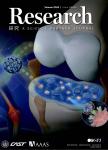Comprehensive Flow Cytometry Analysis of PEI-Based Transfections for Virus-Like Particle Production
作者机构:Vaccine Production Program LabVaccine Research CenterNIAIDNIHGaithersburgMDUSA
出 版 物:《Research》 (研究(英文))
年 卷 期:2020年第2020卷第1期
页 面:50-59页
核心收录:
学科分类:1004[医学-公共卫生与预防医学(可授医学、理学学位)] 100401[医学-流行病与卫生统计学] 10[医学]
基 金:This work was supported by the intramural research program of the Vaccine Research Center(VRC) National Institute of Allergy and Infectious Diseases(NIAID) National Insti-tutes of Health(NIH)
摘 要:The generation of stable clones for biomolecule production is a common but lengthy and labor-intensive *** complex molecules,such as viruses or virus-like particles(VLPs),the timeline becomes even more ***,in the early stages of development,transient production methods serve as a reasonable alternative to stable clone *** this work,an investigation of a polyethylenimine-(PEI-)based transfection method for the transient production of Chikungunya(Chik)VLPs,a vaccine candidate molecule,was *** effort focuses on tracking cell population responses during transfection,understanding how process changes affect these responses,and monitoring patterns in cell performance over the culture *** labeling and VLP staining were employed to comprehensively track cells via flow cytometry and to draw correlations between plasmid DNA(pDNA)uptake and the resulting VLP *** method detected high transfection efficiency(≥97%)in all samples tested and demonstrated the capability to track kinetics of plasmid-cell *** varied transfection cell concentrations,the pDNA binding kinetics are altered and saturation binding is observed in the lowest cell concentration sample tested in less than 3 hours of ***,in all samples,the flow cytometry analysis of relative pDNA amount versus VLP expression staining showed that cells which contained fewer pDNA complexes resulted in the highest levels of VLP ***,to determine the potential breadth of our observations,we compared daily expression patterns of ChikVLP with a reporter,monomeric GFP *** similarities detected suggest the interpretations presented here to likely be more broadly informative and applicable to PEI-based transient production of additional biological products as well.



